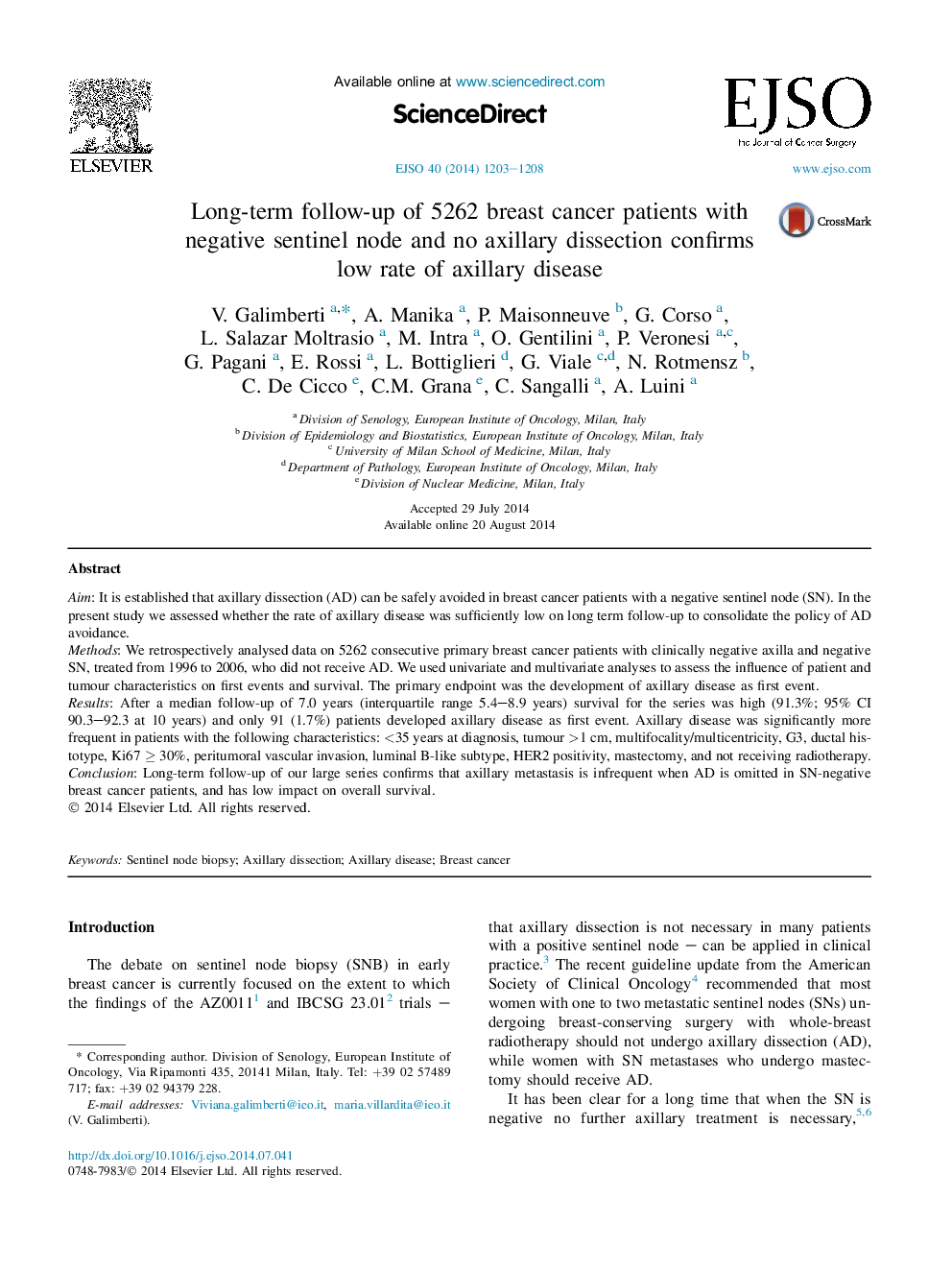| Article ID | Journal | Published Year | Pages | File Type |
|---|---|---|---|---|
| 3985165 | European Journal of Surgical Oncology (EJSO) | 2014 | 6 Pages |
AimIt is established that axillary dissection (AD) can be safely avoided in breast cancer patients with a negative sentinel node (SN). In the present study we assessed whether the rate of axillary disease was sufficiently low on long term follow-up to consolidate the policy of AD avoidance.MethodsWe retrospectively analysed data on 5262 consecutive primary breast cancer patients with clinically negative axilla and negative SN, treated from 1996 to 2006, who did not receive AD. We used univariate and multivariate analyses to assess the influence of patient and tumour characteristics on first events and survival. The primary endpoint was the development of axillary disease as first event.ResultsAfter a median follow-up of 7.0 years (interquartile range 5.4–8.9 years) survival for the series was high (91.3%; 95% CI 90.3–92.3 at 10 years) and only 91 (1.7%) patients developed axillary disease as first event. Axillary disease was significantly more frequent in patients with the following characteristics: <35 years at diagnosis, tumour >1 cm, multifocality/multicentricity, G3, ductal histotype, Ki67 ≥ 30%, peritumoral vascular invasion, luminal B-like subtype, HER2 positivity, mastectomy, and not receiving radiotherapy.ConclusionLong-term follow-up of our large series confirms that axillary metastasis is infrequent when AD is omitted in SN-negative breast cancer patients, and has low impact on overall survival.
